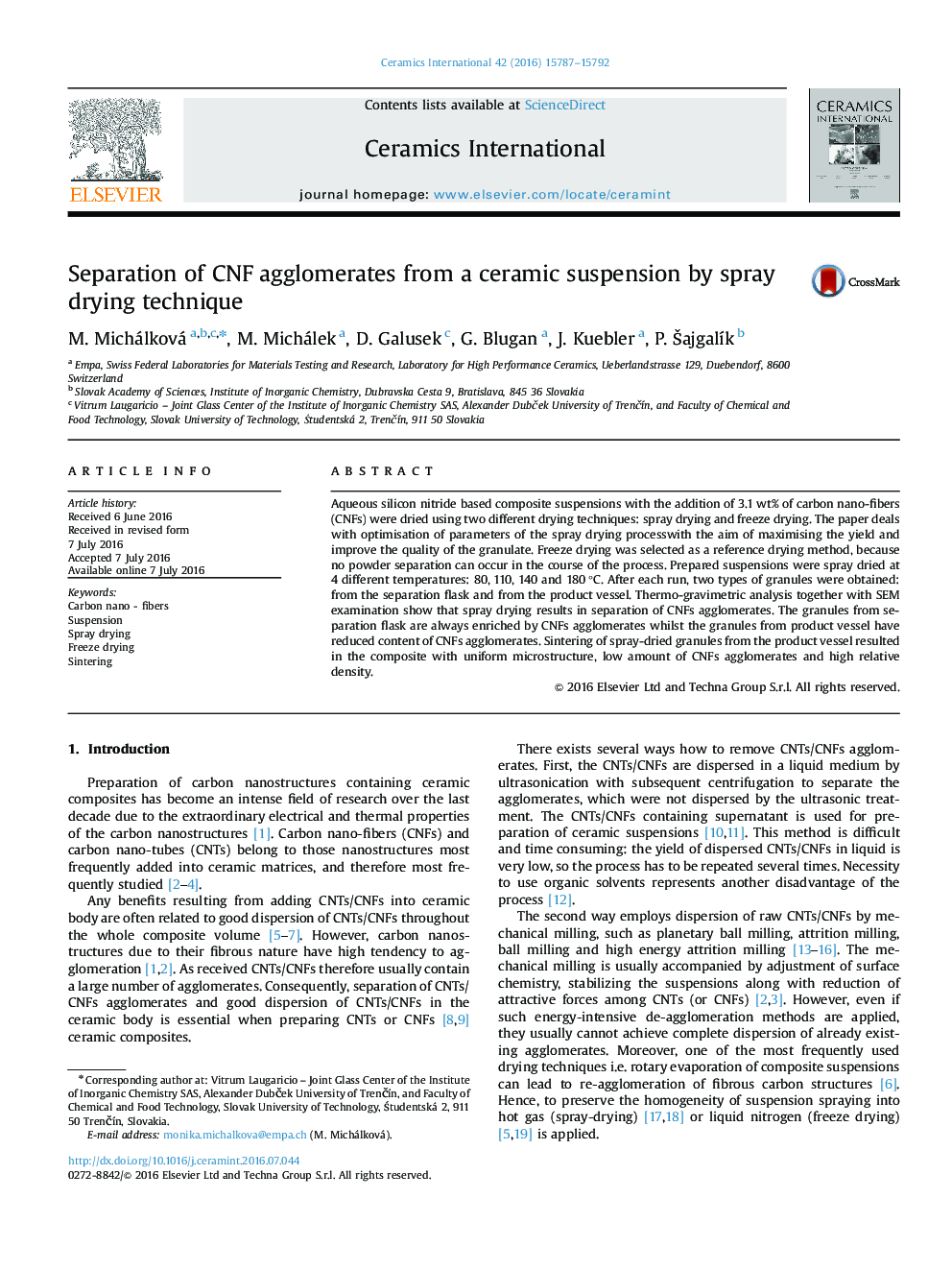| Article ID | Journal | Published Year | Pages | File Type |
|---|---|---|---|---|
| 1458468 | Ceramics International | 2016 | 6 Pages |
Aqueous silicon nitride based composite suspensions with the addition of 3.1 wt% of carbon nano-fibers (CNFs) were dried using two different drying techniques: spray drying and freeze drying. The paper deals with optimisation of parameters of the spray drying processwith the aim of maximising the yield and improve the quality of the granulate. Freeze drying was selected as a reference drying method, because no powder separation can occur in the course of the process. Prepared suspensions were spray dried at 4 different temperatures: 80, 110, 140 and 180 °C. After each run, two types of granules were obtained: from the separation flask and from the product vessel. Thermo-gravimetric analysis together with SEM examination show that spray drying results in separation of CNFs agglomerates. The granules from separation flask are always enriched by CNFs agglomerates whilst the granules from product vessel have reduced content of CNFs agglomerates. Sintering of spray-dried granules from the product vessel resulted in the composite with uniform microstructure, low amount of CNFs agglomerates and high relative density.
